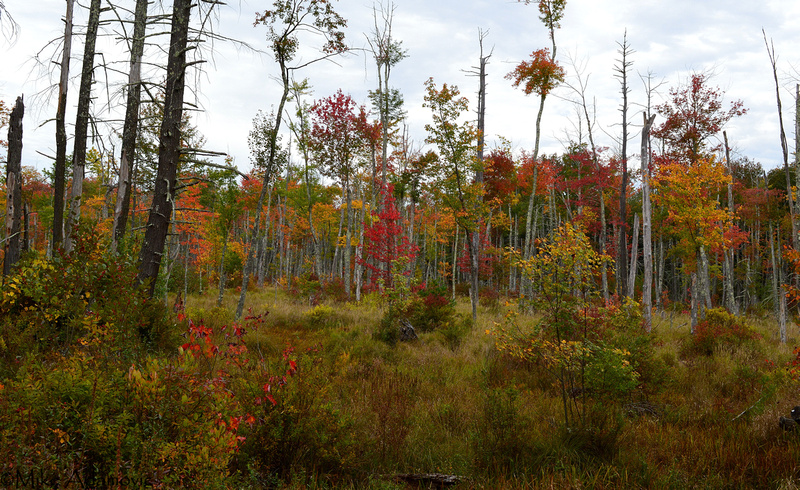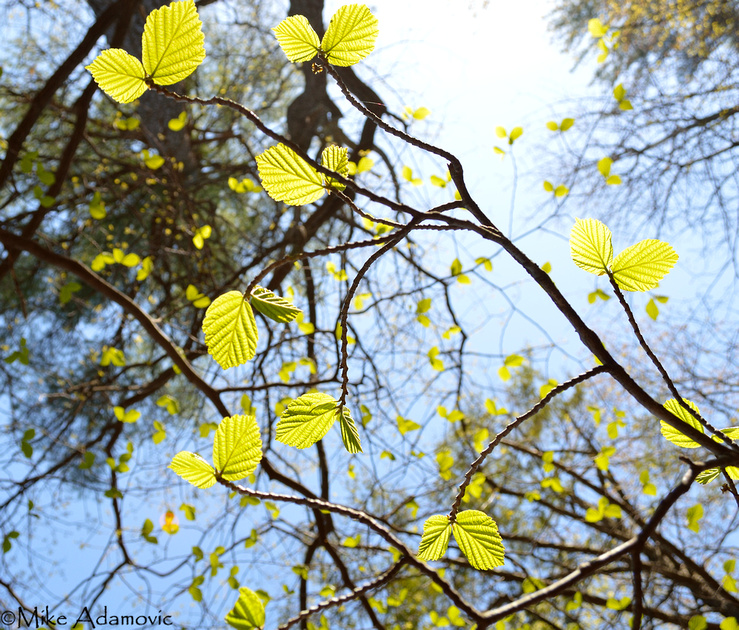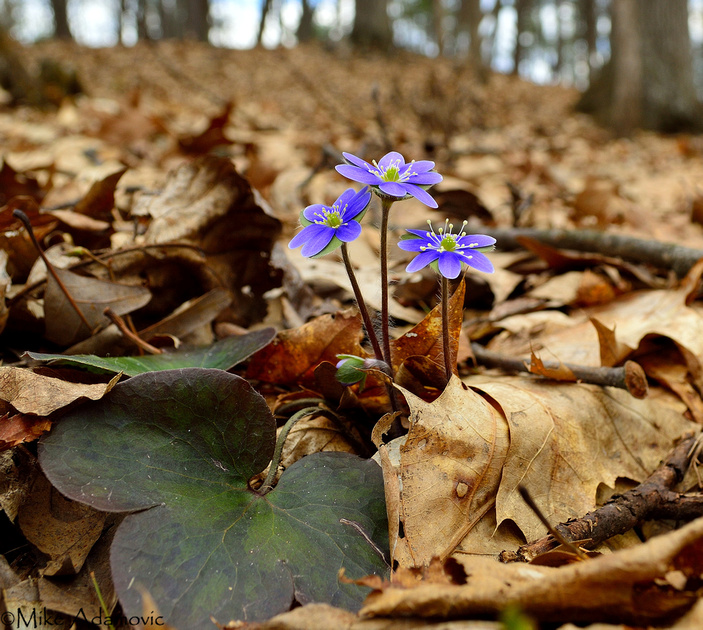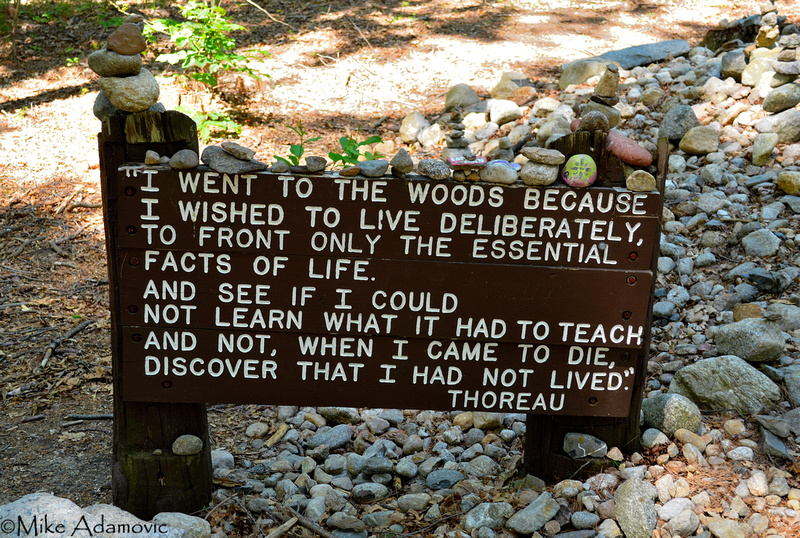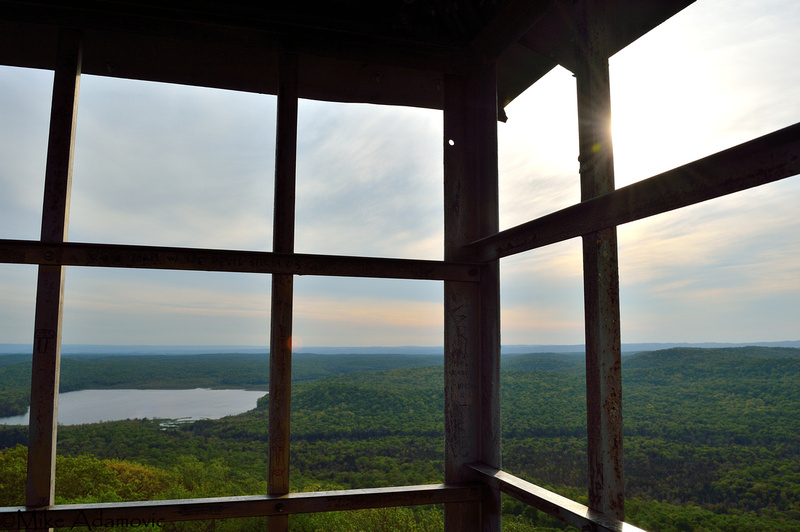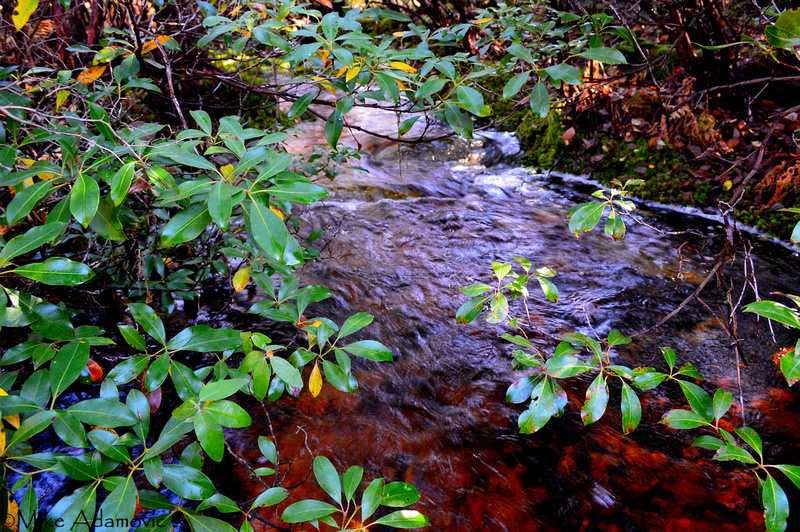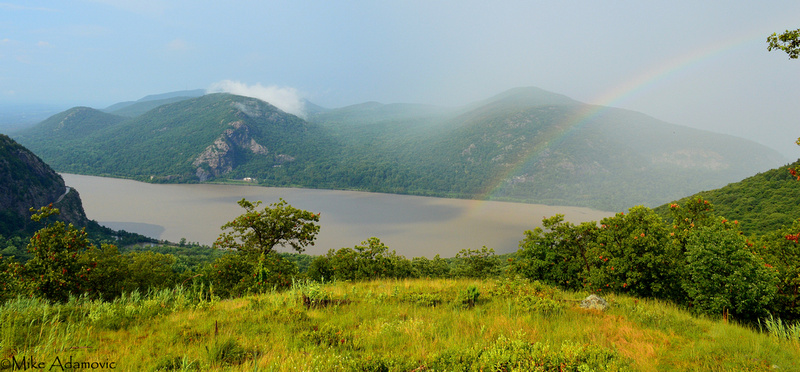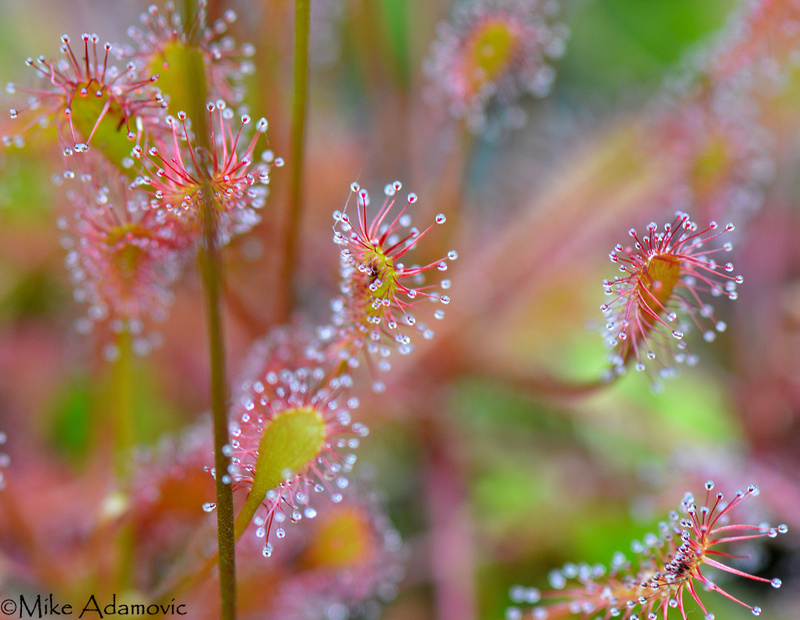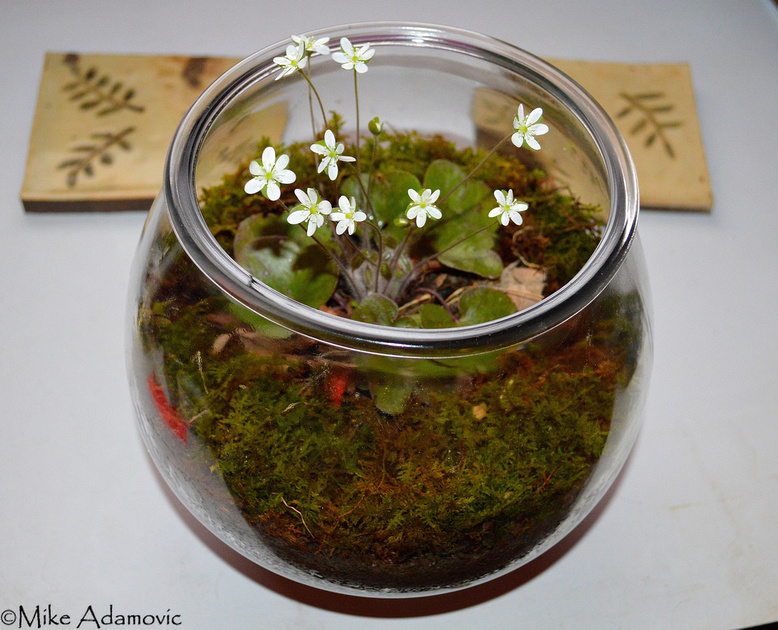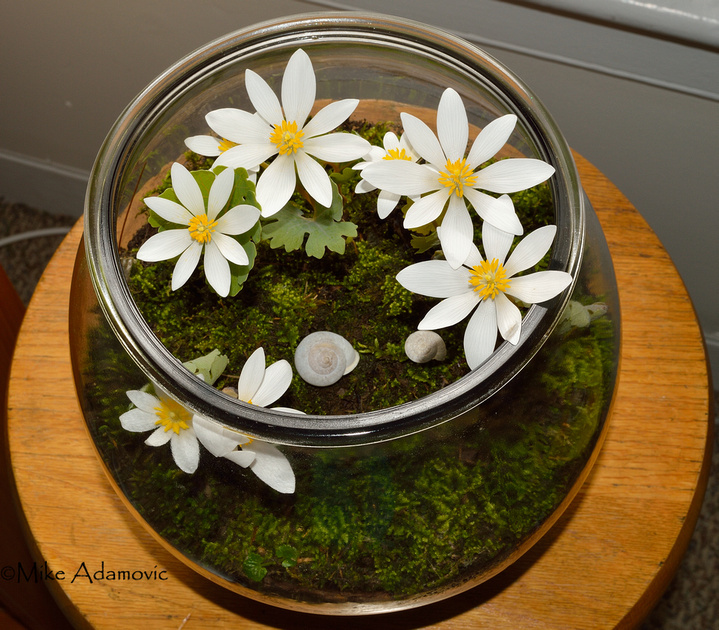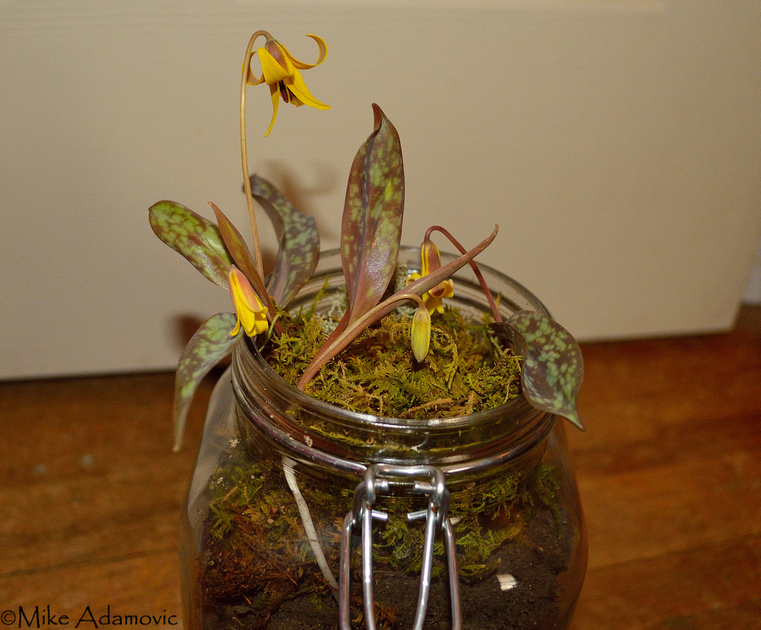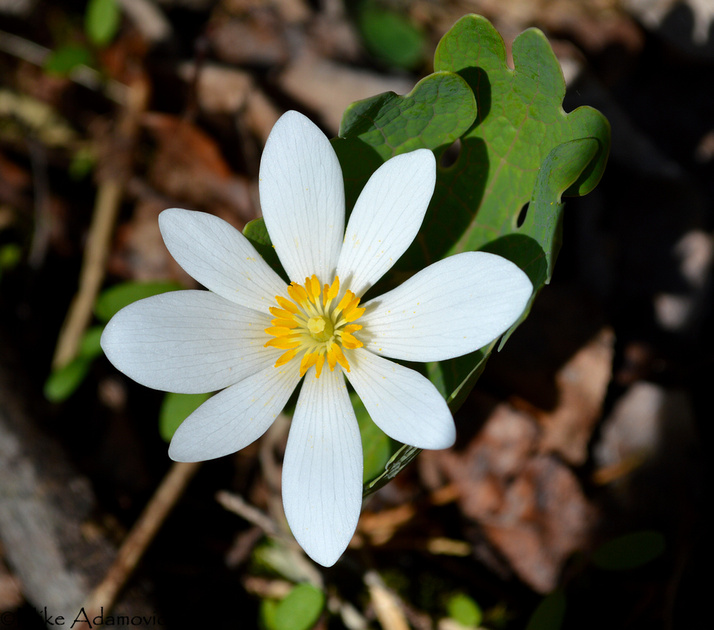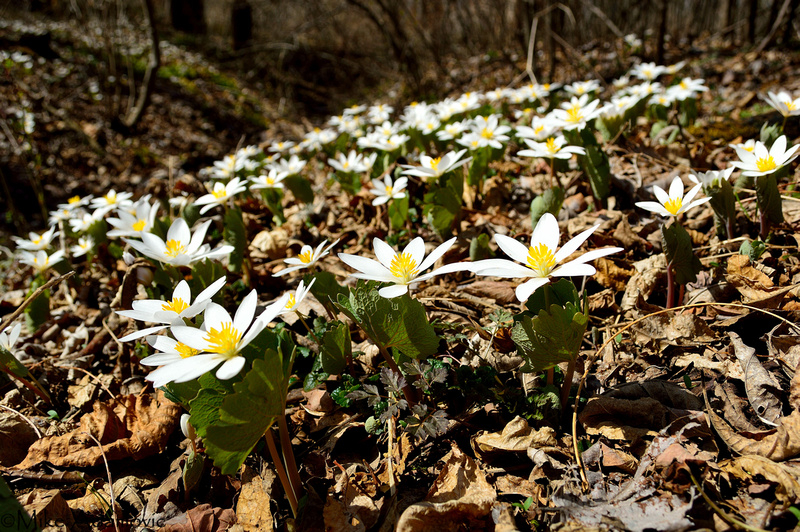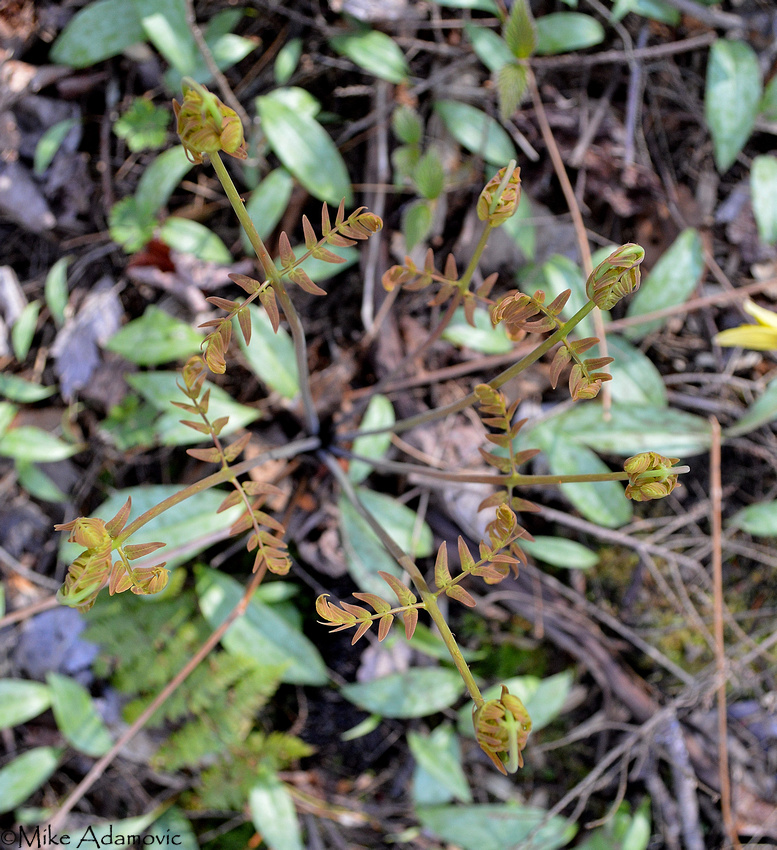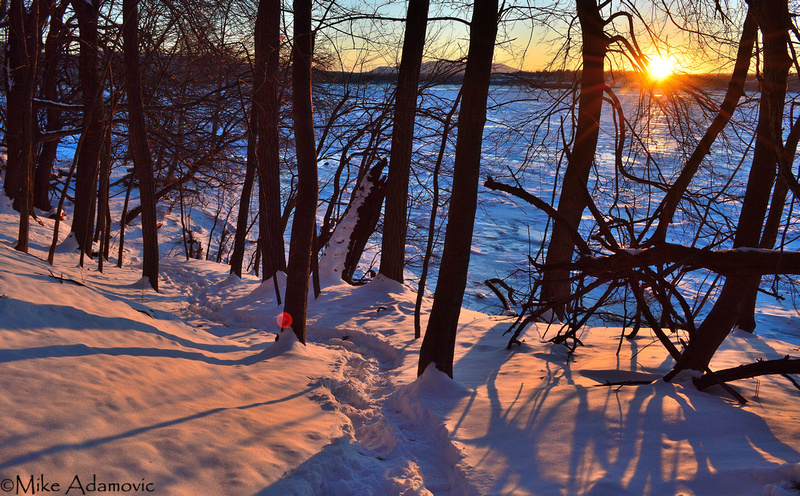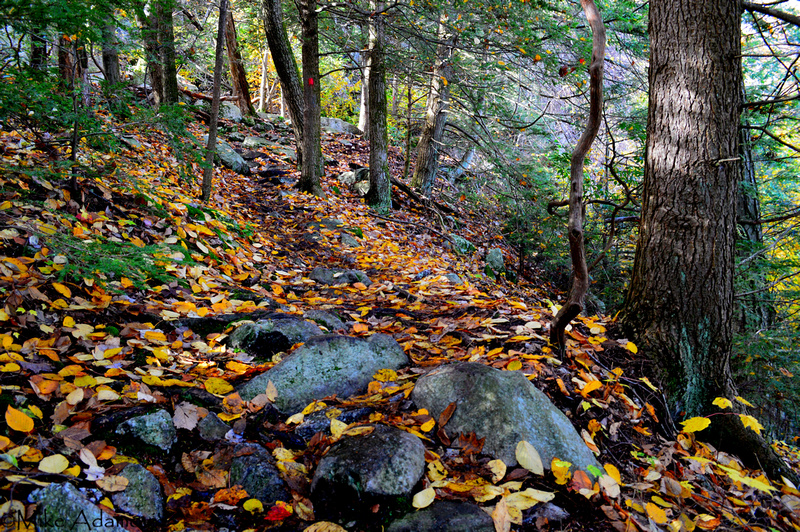Transcendental Musings
It’s often forgotten that every natural object is imbued with an inherent beauty—that there’s more to a pleasing outdoor scene than delicately manicured lawns and gardens lined with gaudy phalanxes of tulips and plush beds of the ubiquitous daffodils or other accustomed garden denizens. That even the mundane when placed into its proper setting, as a rivet or bolt is positioned in a machine, has its purpose and importance. The lone and asymmetrical stone, aggregations of mushrooms, and swarming insects, give greater depth and fuel the scene at hand. Artificial displays excised of anything other than that reared by man can only drive my thoughts so far, leaving but the shallowest and most transitory of impressions. The unkempt and broad splendors of the natural world, in contrast, leave more than lingering awe, continuously driving curiosity and excitement as a new scene of wonder constantly unfolds before me. Among the forests, atop the woody hills and harsh mountain summits, and in every other wild place where nature reigns rather than lurks, a divinely intoxicating influence suffuses the air as thickly as fog, as intensely as light. It humbles, it inspires, it enraptures. The mind becomes more volatile and effervescent, whimsical even. All subjugating thoughts are lifted and evaporated into the crisp air. No longer preoccupied and worried by trivial matters, where a long standing bout of perennial tunnel vision has caused all peripheral sights to be glossed over, the landscape expands—trees can be picked out of the forest line, and individual leaves and blades of grass inspected among the mass of green, the eye drawn by subtle spotting or unusual coloration. Detail is at last seen. Curiosity buds. We become as nimble as a fox, as eagle-eyed as a raptor. We are in our element. A kindred sympathy develops between all surrounding life and matter encountered. The interpenetrating complexity overwhelms, shattering our egos and sense of understanding; all we can do is marvel at the surrounding beauty.
The experiences I’ve had where not even the most minor trace of humanity could be detected have been the most remarkable and memorable. The lapse of time separating me from these events of significance often stretch back years, but I have little difficulty remembering where it matters. Vivid sunsets and even the poignant smell of a wildflower have been enough to imprint the day in full detail into memory. In these instances where nature latches onto us, however slight, the undiluted energy of nature is easily absorbed. Its power cannot be easily contained. Try as you will, but it can’t be hoarded or sequestered for long. It’s eager to be transferred to the nearest object, like an electric spark, making the full rounds of the earth. It floods and expands in the body like lightning shooting from cloud to cloud, forming vast networks as comprehensive as those created by the roots of plants. Man is its surface conduit. From him it radiates by tendrils, which grasp and climb everything within reach, elevating man, and granting him new and inspiring views of both sight and thought. No longer disconnected, bouncing around as some rattling and discordant component, we now humbly assist with the workings of this grand machine, that we call Nature. *** Men vainly strive for a greater purpose, thinking only of advancement, the attainment of power and exerting influence—always on the move and shamefully hiding their heads if they’re surpassed by those more adroit than themselves. A life of hectic devotion to such disgraceful tenets of the modern era is an affront to the simplicity and beauty of the world, taking us farther away from the true goals that should pervade our lives. We should rather follow the example of the woodland spring ephemerals. Though diminutive in stature, with some barely able to rear their heads above the leaf litter, they freely share their gifts to all with an air of unpretending humility. When we finally have sense enough to see that this is as high a purpose as one need to strive to attain, we shall with ease command a different sort of success, attracting a steady following of those reverencing kind and radiant virtues, as a hidden flower has its loyal pollinators. There’s meaning and wealth in everything, regardless of position or stature. While those hidden among the detritus of the forest floor will be seen and respected only by a portion of the population, they will reside solely among the best company, having had unworthy visitors winnowed by the grate of the forest.
Find Your Eternity in Each Moment
Why should we live with such hurry and waste of life? We are determined to be starved before we are hungry. Men say a stitch in time saves nine, and so they take a thousand stitches today to save nine tomorrow. As for work, we haven’t any of consequence. –Henry David Thoreau
Thoreau was a man who valued time. Not in the monetary sense, as we are apt to envision today by the adage of “time is money,” but rather viewed it in broader, more cosmological terms, equating it with the eternal and divine. “Time is but the stream I go a-fishing in,” he says in Walden. “I drink at it; but while I drink I see the sandy bottom and detect how shallow it is. Its thin current slides away, but eternity remains.” Time is the gateway, the buffer, to the underlying force that imbues life with meaning and purpose. Squandering time as but a means to accumulate wealth, as Thoreau viewed it, was an act as profane as despoiling a church. How can we foster a relationship with the divine when we devote a majority of our time tirelessly working to accumulate possessions which will “moth and rust?” Our restless nature, devoted to toiling day in and day out for a “pecuniary reward” with the added benefit of keeping us busy and out of trouble, couldn’t be more base and uneducated. This misdirected work ethic doesn’t arise so much from greed as that “our vision does not penetrate the surface of things.” We view time, like the water in Thoreau’s metaphorical stream, as a commodity to be traded and sold, and not as the holy water that it truly is. Thoreau wetted his fingers in the current to obtain his victuals and other “necessaries of life,” but certainly didn’t immerse and drown himself in it as most of us commonly do today. A couple dabs a week was sufficient to sustain him. He sought focus on more important matters.
He understood moderation and sobriety. Instead of copiously imbibing in mostly fruitless work until he was too fatigued to accomplish anything of personal value, he substituted it for leisure and endeavors closer to the heart which no quantity of money could measure up to. He noted that most are “occupied with factitious cares and superfluously coarse labors” to the point where one has “no time to be anything but a machine” insomuch that the “finer fruits cannot be plucked.” The route that Thoreau pursued was one devoted to seeking out the mystifying and inspirational qualities of Nature, recording his unique sights and thoughts in poetry and prose. This was his divine life. To others it’s something else, just as personal and individualistic. We can’t aspire to this “higher and more ethereal life” without shifting our perception and giving up what society has solidified as bedrock. We must burrow beneath or soar above it. By living simply and attuned to the natural world Thoreau discovered that our main focus should be placed on the intangible. New experiences and opportunities are the “marrow of life.” Toys and technological gadgets which increasingly provide our main sources of extracurricular entertainment distract us by placing our time into purely external vectors that yield no dividend. Even the highest or most refined strain of materialism can’t replicate or supersede the benefits of an inherently humble, natural life. “The true harvest of my daily life is somewhat as intangible and indescribable as the tints of morning or evening,” Thoreau rapturously mused. “It is a little star-dust caught, a segment of the rainbow which I have clutched.” The relentless pursuit of wealth clouds the eyes, robbing us of the beauty and simplicity of nature. The “commercial spirit” which was the gospel and ruling force of Thoreau’s day and still animates and drives us at present, leads to an ingrained belief that commerce surmounts all else; without which the world would stagnate and collapse. Thoreau loathed this was of narrow way of thinking, ultimately upending it in his Harvard commencement speech in which he defiantly stated: “Let men, true to their natures, cultivate the moral affections, lead manly and independent lives; let them make riches the means and not the end of existence, and we shall hear no more of the commercial spirit. The sea will not stagnate, the earth will be as green as ever, and the air as pure. This curious world which we inhabit is more wonderful than convenient; more beautiful than it is useful; it is more to be admired and enjoyed than used.”
Similarly, Thoreau was appalled to see how easily his contemporaries could be bought “off from their present pursuits” by “a little money or fame.” Chasing the almighty dollar over personal passions, he reasoned, cheated men from situations that were much more profitable to individual growth and understanding the larger, universal picture of existence. “To have done anything by which you earned money merely is to have been truly idle or worse.” Thoreau excelled at turning things upside down, making someone revisit a situation from a fresh angle or vantage point to see that there exists more than one way of thinking or interpretation. The accustomed standard of success rests upon following a set and tried formula. Plug in variables into the equation and take out a known logarithmic return. It works. Thoreau didn’t devise some entirely new scheme to circumvent this process, but instead, as he was rather fond of doing, simplified the equation to suit his particular tastes. We can best see his razor logic at work in this passage: "Not long since, a strolling Indian went to sell baskets at the house of a well-known lawyer in my neighborhood. 'Do you wish to buy any baskets?' he asked. 'No, we do not want any,' was the reply. 'What!' exclaimed the Indian as he went out the gate, 'do you mean to starve us?' Having seen his industrious white neighbors so well off — that the lawyer had only to weave arguments, and, by some magic, wealth and standing followed — he had said to himself: I will go into business; I will weave baskets; it is a thing which I can do. Thinking that when he had made the baskets he would have done his part, and then it would be the white man's to buy them. He had not discovered that it was necessary for him to make it worth the other's while to buy them, or at least make him think that it was so, or to make something else which it would be worth his while to buy. I too had woven a kind of basket of a delicate texture, but I had not made it worth any one's while to buy them. Yet not the less, in my case, did I think it worth my while to weave them, and instead of studying how to make it worth men's while to buy my baskets, I studied rather how to avoid the necessity of selling them. The life which men praise and regard as successful is but one kind. Why should we exaggerate any one kind at the expense of the others?" The ideas developed and touted by Thoreau and other Transcendentalists have often been described as too quixotic and impractical, that idealism can’t be a firm substitute for the realities of a harsh world. While some are indeed whimsical, crafted for purposes of morale and inspiration, a significant portion are practical to integrate into our daily routine. Thoreau wasn’t a man who preached hollow ideals; instead he staunchly embraced the words he uttered and demonstrated them to be true through experience, evinced by his experiment at Walden Pond. During his two year stay in the woods he conclusively proved that it was possible to throw off the yoke of society and still live a rich and meaningful life following one’s particular bent. The hard part was not getting away, but altering thought processes to ensure the allure of “civilized life” wouldn’t, like the sirens’ call, draw one towards the rocks. He was convinced “that to maintain one’s self on this earth is not a hardship but a pastime, if we will live simply and wisely.”
Terrariums
A terrarium is a world within itself, a tiny ecosystem capable of surviving almost entirely without human assistance. Add plants to a glass enclosure, sprinkle in a bit of soil and water, and ensure the system receives adequate sunlight, and a self-regulating system emerges. Creating one and watching it thrive bottled up amidst a harsh artificial human environment is a rewarding experience that provides a greater appreciation of the fortitude of nature. Adding a terrarium to the home or work space can help brighten up the surroundings in a natural and low-cost way that supersedes cut floral arrangements and prosaic static wall paintings. These elegant systems are living artwork, as it were, and continually morph before your eyes into a novel and inspiring mural of unique form and color. Terrariums are relatively easy to construct and require only a handful of basic supplies. To start out you’ll need a glass container (with or without a lid depending on whether you want an open of closed terrarium), medium sized river rocks (1-1.5 inches in length), coarse sand, and rich soil. The glass containers can typically be found at larger craft stores. Michaels and Hobby Lobby have a wide selection at low cost. It’s important to include three substrate layers when building a terrarium in order for it to remain healthy. I add river stones to the bottom, sand on top of that, and finally soil above the sand. Thickness wise you’ll have to gauge for yourself depending on the size of the container. I use a ratio of 2:1:3—two parts stone, one part sand, and for the largest addition, 3 parts soil. Unlike potted plants, a terrarium lacks drainage holes in the bottom of the container. Excess moisture will cause a whole slew of problems, especially if it has a lid. Watering is therefore a delicate task. The jumbled rocks on the bottom serve to help mitigate the inclusion of extra water by acting as a reservoir. Rocks of medium size work best because the spaces among them hold a fair amount of water and allow you to see exactly how damp the system is. The sand serves as a buffer between the two other layers and helps facilitate drainage. When it comes to choosing plants, there’s an extremely wide variety that can be grown successfully in a terrarium. Traditionalists tend to use small and slow growing species for closed terrariums and succulents or other plants that do well with minimal moisture for open ones. As long as the plants don’t grow excessively tall you can essentially include anything. I personally enjoy incorporating native flowering species into the mix, though they do frequently require a bit of effort to maintain.
If you’re after a stable, long-term terrarium, I would suggest sticking primarily to ferns, mosses, and other non-flowering plants. On the other hand, if you desire something more visually striking, and can handle a system that is relatively short-lived, an optimal addition would be spring ephemeral wildflowers. Violets, hepatica, red columbine, spring beauty, rue anemone, and trailing arbutus are among the multitude of small to medium sized ephemerals that can survive the rigors of confinement in a container. They should be added in the early spring just as the foliage begins to appear. Plants will remain in flower for a month at most, after which they should be taken out. They can be replanted in an outdoor garden until the following spring. Ephemerals can make do in a closed system in the beginning, but as the plants prepare to flower they will often exceed the height of the lid and it must be removed. Spring ephemerals can sometimes be bought at nurseries, but more often than not, they will be difficult to track down. Seeds can be purchased online for harder to find varieties. Of course, plants can also be collected in the wild, but this should only be undertaken if they’re in abundance or are threatened with imminent destruction. Once your chosen plants have been placed inside and a layer of soil tightly packed around the bases to make everything level, it’s time to add the final touches. For a lush and verdant look, as well as to keep the top layers of soil and roots sufficiently damp, it’s important to use moss as a covering for bare soil. What grass is to lawns, moss is to terrariums. Any type will work. A thick layer is probably best, as it lends a feeling of fecundity and age to the miniature ecosystem. Moss is also useful for indicating whether the system is properly hydrated. It should always be slightly damp to the touch. A closed terrarium is a microcosm of earth. The glass dome traps incoming solar radiation the same way our atmosphere does, producing a greenhouse effect. As the system warms, plants gradually draw water from the soil and rocky reservoir, transpiring it into the air above where it condenses on the glass, and either drips or slides back down the walls to continue the cycle. A properly constructed terrarium will require only the occasional maintenance.
Bloodroot (Sanguinaria canadensis)
Quickly after the last of the winter snow has dissipated and a flattened, tawny earth emerges to greet the first rays of the spring sun, certain streamsides and other moist areas throughout our region find themselves covered once more with a dense layer of white. This time the cloak originates from beneath the newly warmed ground, rather than the upper reaches of the chilled atmosphere. Bloodroot, an uncommon spring ephemeral, whose ivory petals surround a bright, golden center, is one of the earliest wildflowers to be awakened by even the most minimal of April heat, eager to bask in the untapped reserve of sunshine now flooding every nook and cranny of the understory. As the name portrays, these plants do indeed possess crimson roots. Moreover, this species bleeds the same as any injured animal. A broken leaf or stem will cause the plant to exude a fluid alarmingly similar to blood. It stains anything it touches, and has been used in years past as a dye by both Native Americans and Colonists. Additionally, root extracts have historically been used to treat a wide variety of ailments ranging from cancer to lung disease to sore throats. And up until recently, it was even employed as an ingredient in Viadent toothpaste to combat gum disease and the build-up of plaque. At the moment, though, the efficacy of bloodroot on anything health related is dubious at best. Numerous sources relate that the root is toxic, and even coming in contact with its juices can cause dermatitis, similarly to poison ivy. It’s hard to believe it was ever consumed—the root’s taste is so acrid that a minor quantity can induce vomiting. Some concoctions were once made more palatable by adding copious quantities of sugar. This is probably one plant that should be appreciated by sight alone. When it comes to habitat, plants prefer moist, rich soils, having an inclination to grow along gently sloping banks. More often than not, they will be found along some type of water body, be it a river, lake, or even a temporary rivulet born of snowmelt. While one of the loveliest flowers of the early spring, it also lives up to the category of wildflowers it’s grouped into exceedingly well (spring ephemerals). Trying to locate an intact specimen requires razor-sharp precision time-wise. With flowers usually lasting no more than a few days, it certainly is imbued with a fleeting nature. Plants will only produce a single blossom, which once lost, will not attain another until the following spring. Typical bloom dates are from mid-April to early May. Like many other spring ephemerals, bloodroot uses ants as a means of seed dispersal, a technique known as myrmecochory. Each tiny seed is equipped with a lipid-rich appendage called an elaiosome. This tempting morsel entices ants to transport the seed back to their nest where they remove the elaiosome and discard the seed body in waste pits that provide an enriched medium for growth. In this way, bloodroot is able to colonize new locales away from the parent plant and ensure optimal germination. Usually found in small groups or clusters, large colonies can develop, containing in excess of several hundred individuals, the result of vegetative propagation, another form of reproduction which produces clones by extension of the rhizomes, or roots.
With bloodroot awakening much sooner than other plants, the large blossoms, as well as the glaucous, almost succulent leaves, create a striking scene among the withered foliage and broken stems of last year’s growth. A particularly large, showy grove is easily spotted at a considerable distance and visually eclipses other ephemeral populations that attain a similar size. There’s something entrancing and fairy-like in the demeanor of these uncommon flowers, with their unique ability to pop up seemingly overnight, transforming the landscape like magic. Such vigor and color contrasts greatly with the bleak debris that surrounds, creating an image of surpassing beauty that’s sure to be emblazoned in memory and sought out year after year.
Amid the briar copses, of sunny vales And moist streamsides; awakened As suddenly upon the beat of quails, A purity surpassing newly fallen snow Richly carpets the earth—a beauty, I thought I’d surely never know.
A lingering moment viewing, Singular works as these, Stops all worthless ruing And fills the heart with ease.
Those cheerful, ivory blooms Whose being is a smile, Sweep away better than a broom, Debris of cluttered forest aisle,
And like the crimson dye That lends the plant its name, It stirs the blood of every passerby And is more worthy of fame— Than ordinary garden denizens. The Return of SpringWinter to many is a foe, an unkind influence, as diabolical as any malevolent entity that can be imagined. We fear and curse it, but stand in awe of its potent capabilities. We avoid it like the plague, if we can, withdrawing and barricading ourselves in our heated, summer-like homes, preparing for the worst. As the tightening, icy winds swirl outside and transform the life-giving ground into iron and drape a stoic cloak over the lighthearted waters of the earth, we pray for salvation from this repetitious pestilence, cloistered away from the sins of the world like a penitent friar or nun. Snow seemingly piled a mile high nearly extinguishes all hope of deliverance. When apathy at last takes hold and begins to invade our very souls the same as frost inches its way through the flesh of the earth, and all appears lost, the stifling clouds miraculously dissolve, letting the heavenly rays descend to squash the cold and harsh monotony of the bleak winter season. Spring has finally arrived—and a myriad trickling streams now hurry the free-flowing blood of the earth back to where it can give new life and reanimate the weary world.
People throughout all ages and cultures not residing in the ever-balmy tropics have been of a similar vein of mind when it comes wishing the woes of winter away and rejoicing at the prospects that blow in with the warming winds. It is therefore not surprising in the least, that spring, the season of rebirth and new beginnings, has been disproportionately memorialized in legend and lore by innumerable cultures. Like most mythology, the most well-known tale comes from Greece: The ancient Greeks believed the changes of the seasons were brought about by the moods of Demeter, the goddess of grain and growth. As legend has it, long ago, autumn and winter were non-existent, and the world was blessed with perpetual summer. This abruptly changed when Demeter’s attractive daughter, Persephone, was abducted by Hades, the god-king of the underworld, who had long admired her from afar, and now wished to make her his bride. The disappearance of Persephone did not sit well with Demeter, who like any good mother, strove to locate her missing daughter. She literally searched both heaven and earth for an answer; and in the process, neglected her godly duties of tending to the world. Crops failed, vegetation withered, and a cold snap the likes of which hasn’t been witnessed since overtook the earth. Scores of people starved or froze to death. Eventually, Zeus, the king of the gods, could no longer countenance the destruction levied upon his dominion. He begrudgingly revealed to Demeter what had taken place (he actually played a role in the abduction), telling her he would instruct his brother Hades to release Persephone from the underworld. Hades agreed to the return, knowing a refusal would bring upon him the full and uninhibited wrath of the almighty Zeus, a mercurial god who was not to be disobeyed. Before doing so, however, he gave Persephone some pomegranate seeds to eat, well knowing this tiny acceptance of food would bind her to him and she would eventually be compelled to come back. Demeter, overjoyed with the reunion, once again smiled. Warmth and fecundity returned to the desolate landscape, resulting in the first spring.
The situation was bittersweet. As the two caught up, recounting the trials each had experienced over the preceding months, Demeter was distraught when she heard mention of the pomegranate seeds her daughter had consumed. It was then realized that things would never again be the same. Zeus decreed that by accepting food from Hades, and thus having had her lips stained by the ruby fruit of the pomegranate, Persephone had blemished herself—a stipulation for her return to earth was to be as pure as the day she had left, a condition she had clearly violated. Knowing that the world would be imperiled if Persephone was forced to always remain sequestered in the underworld, a compromise was struck by Zeus. For half the year Persephone was to spend her time with Demeter, while the other six months of the year she would remain with Hades, reigning as Queen of the Underworld. When Demeter smiles, having the company of her beloved daughter by her side the world rejoices, surrounded by the lush, verdant grandeur of summer. But when she mourns the loss of Persephone to Hades, and is heavy with grief, winter again sweeps across the earth.
|
